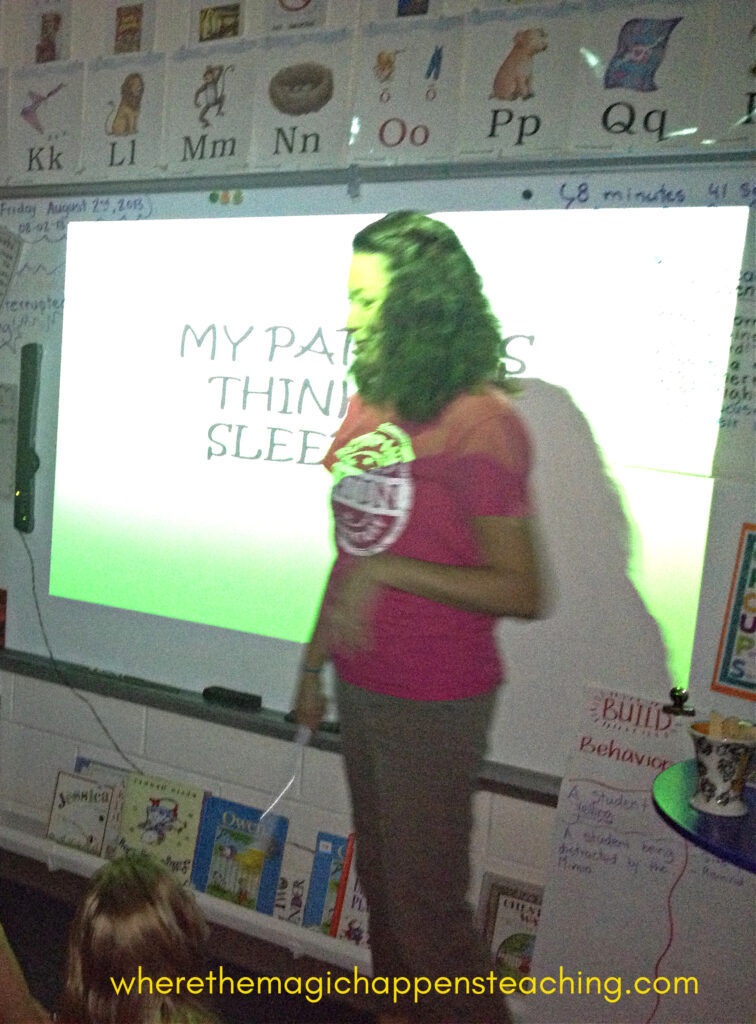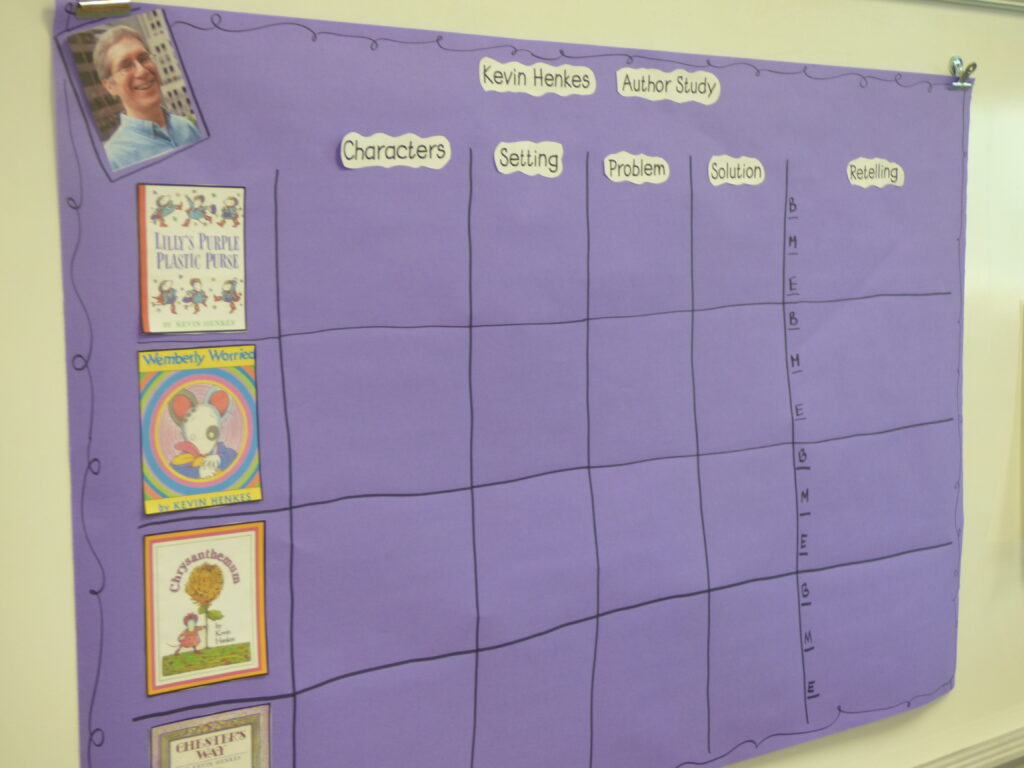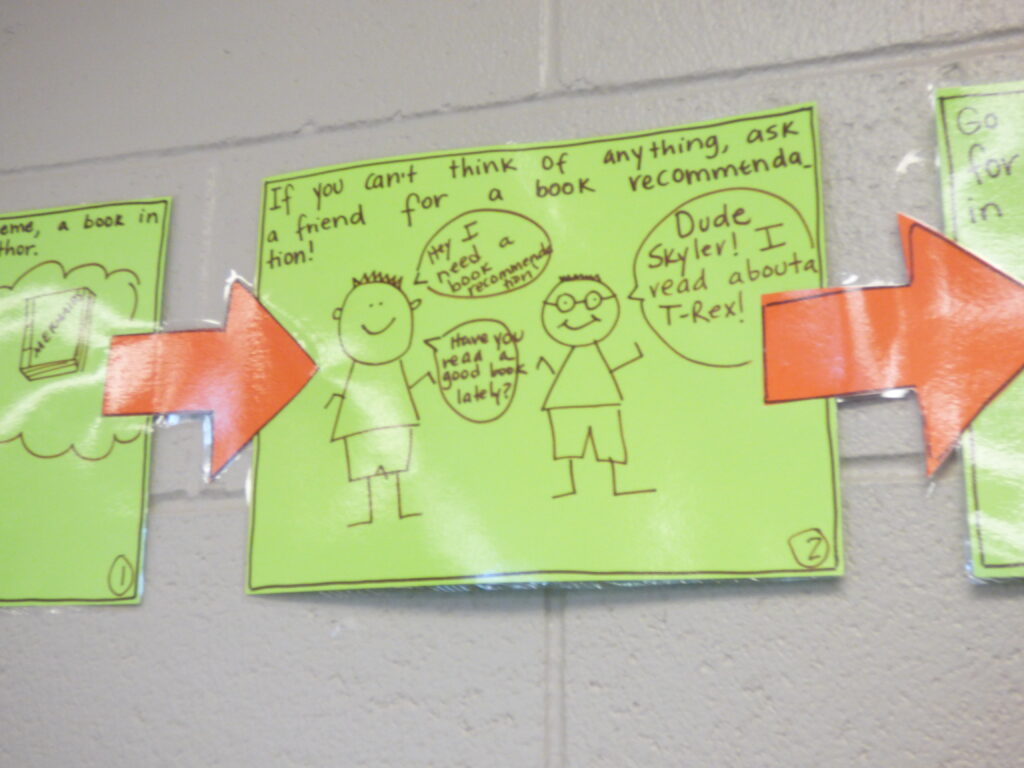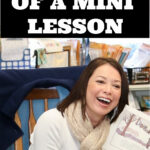Before we can talk about the structure for a whole group mini-lesson, we need to agree on what we mean by a mini-lesson, whole group or otherwise. I define a mini lesson as a short (10 to 15 minutes) lesson with a narrow focus that provides instruction in a skill or concept to build a reader’s competency as an independent reader. A mini lesson typically occurs at the beginning of reading workshop or writing workshop. Mini lessons are based on the informal assessments and observations by a teacher about what students need next to successfully move forward as readers. Whole group mini lessons are part of a balanced literacy framework (read-aloud, shared reading, guided reading, literature discussion) in elementary classrooms.

In my classroom, mini lessons general fit into four types depending on the purpose for the lesson:
MANAGEMENT MINI LESSONS
These mini lessons typically occur at the beginning of the school year when I am establishing routines and procedures for how reading works in my classroom. I might teach how to choose books for independent reading, or what children are to do when I am doing guided reading. These lessons are all about helping students to operate in the classroom during the reading block. Students will need reminder mini lessons through the year for processes that you want to reestablish if things are going awry for some reason.

SKILLS OR STRATEGY MINI-LESSONS
These mini lessons are focused on the basic skills and strategies important for my grade level regardless of the reading level of a child is reading and are the most common type of mini lesson I teach. The standards for my grade is often the guide for these lessons but knowing my children help me select the particulars.

LITERARY MINI LESSONS
These mini lessons are focused on building student’s awareness of literary elements of text. I might teach about the difference between fiction and non-fiction, genre of text, text features. I am exploring text features that apply to reading materials regardless of the text level of a reader.

READING/WRITING MINI LESSONS
These mini lessons are about using reader / writer connections to build student’s understanding about the link between the two processes. I might teach about letter formation (how to make the letter from left to right, top to bottom) and how to look at that letter within a word when trying to problem solve your way through a word.
Most whole class reading and writing skills can be taught in mini lessons. Identify a single, small skill to teach within each short, 10 to 15-minute lesson. Lessons are short or “mini” because students don’t get better listening to the lesson. They don’t become better writers or stronger readers in the lesson. They get better after the lesson when they’re attempting to use the skill and working to incorporate it into their own reading and writing.
So, what are the steps in a mini lesson?

Step 1: Introduction
Announce the day’s mini lesson skill or strategy. Name what you are going to teach. CAUTION! Remember to keep the focus small. For example, don’t teach grammar in a mini lesson, but rather how to read a prepositional phrase in a sentence to develop fluency. Don’t teach how to read non-fiction text in a mini lesson, but rather how the author tells us where information in the text comes from. Don’t teach visualization in a mini lesson, but rather how to visualize a character’s feelings. Tell the students why you are teaching this particular thing. Example: “We’ve been working on reading bigger words and I want to teach you another way to figure out big words, so they won’t be so scary.”

Step 2: Instruction
This step provides the meat of the lesson. During this time, the teacher demonstrates how to do the skill through modeling, examples, and think aloud. The goal of the instruction is to intentionally teach students how to use a particular reading or skill or strategy. In this step, the teacher works alone to demonstrate and explain the skill specifically. This is not a time for lots of student interaction with the teacher but a time for students to watch and listen. In terms of the gradual release of responsibility, this is the “I do, you watch” part of the lesson. It is important that the teacher language here is concise and includes demonstration. “Let me show you what I mean.” rather than lots of teacher talk.

Step 3: Interaction
If Step 2 is the “I do,” then Step 3 is the “We do.” During this part of the lesson, the whole class works together to apply the skill with the teacher close by to provide support. After demonstrating the skill back in Step 2, utilize different samples here in Step 3. For example, reveal different sentences for students to read with prepositional phrases. Show additional texts where the author cited sources. Or, read short, new excerpts and ask students to visualize how characters are feeling. Participation in this step is important for students. This does not mean students will have perfected their use of the skill, but this step will help them remember what you have demonstrated by trying it out. This also gives you a chance to see what the students took on of what you taught
Step 4: Closure
Step 4 closes the mini-lesson and set students up for a response activity. After the “I do” (Step 2) and the “We do” (Step 3), it’s time for the “You do” (Step 4). Identify what you want students to do with the skill on their own. “While reading/writing today, I’d like you to. . .” Tell the students to plan to try the strategy today during independent reading. This is a time to direct the student’s independent work by trying whatever was taught. Ask the students to let you know if they tried the strategy and how it worked for them.
In summary, the mini lesson is the direct instruction you provide your students focused on students’ needs and the reading standards for your grade. You introduce and teach a strategy, skill, or behavior, and model using this concept through a quick read aloud or think aloud. Students do a quick try out of the idea using an example you provide. Then students go and practice this concept with their own book during reading. Mini lessons provide explicit and effective modeling of reading strategies, skills, or behaviors that help students become more competent readers.
There are two keys to a successful mini lesson:
1. The careful selection of the discrete item to be taught. Use your standards and your knowledge of the students you teach!
2. Thoughtful planning and selection of examples and materials to use to get to the heart of the concept. Keep it simple and choose clear examples!





Leave a Reply